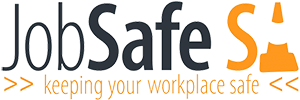Plastics
The Plastics Manufacturing Industry is a large and varied part of the South Australian workforce. The industry produces a vast range of products and it employs workers from all walks of life. The types of injuries sustained by workers relate primarily to manual handling and chemicals.
INJURIES
The main causes of injuries within plastics manufacturing are:
- Muscular stress caused by manual handling (the largest cause of all injuries in the industry)
- Slipping or tripping
- Chemical exposures
- Accidents with machinery, tools and equipment
Historical statistics showing the Number of Claims in the Plastics and Rubber Products Industry from 2001 – 2004. Table taken from the SafeWork SA website www.safework.sa.gov.au
HAZARDS
Some hazards in this industry include:
- occupational asthma, and respiratory irritation from exposure to plastic fume
- dermatitis, in particular in fibre reinforced plastic product manufacture
- exposure to noise
- manual handling
Body stressing or muscular skeletal stress due to heavy lifting, repetitive actions and sustained awkward postures are a major social and economic burden on the manufacturing industry with injury claims totalling more than $2 million during each of the financial years between 2002 2005. It accounted for 44% of all the manufacturing industry’s workers compensation claims for 2003/2004.
What injuries can manual handling cause?
While not all manual handling tasks will cause injury, hazardous manual handling can lead to many serious conditions, including:
- muscle sprains and strains
- back injuries
- soft-tissue injuries to the wrists, arms, shoulders, neck or legs
- abdominal hernias
- chronic pain
Stretch prior to performing any manual handling task
In Australia up to 100,000 occupational injuries each year are spine related. Some activities that increase the risk on injury are:
- handling awkward shapes
- using hand or power tools
- over-reaching with a load
- working above shoulder height
- handling too much weight
ACTIONS THAT CAN REDUCE THE RISK OF INJURY
Modify the object
Can the object be made lighter, packed into smaller containers or made less bulky?
Can the shape or surface texture of the object be changed to make it easier to grip?
Could the surface be cleaned or the edges less sharp?
If it is hot, could it be made cooler?
Can handles be provided, or some type of sling used to move the object?
Modify the workplace layout
Store heavier and more frequently used items at waist level.
Raise work level by use of self-adjusting platforms.
Prevent excessive bending of the back by adjusting the work level.
Provide adjustable storage heights and adjustable work heights.
Rearrange materials flow
Consider the schedule, timing and the way loads are moved around the workplace.
Automatic doors can avoid the need to put down a load, or balance a load awkwardly to open a door.
On a conveyor belt, tilt taller objects so they lie lower or reduce work height.
Reduce the distance to carry objects.
Different actions, movements and forces
Can lift tables be used to raise the work level to make materials more accessible?
Position all tools and materials in front of the employee.
Conveyors, slides and turntables can be used to change material flow direction.
Provide adjustable, swivel chairs.
Introduce job rotation with a mixture of repetitive and non-repetitive tasks.
Where re-design is not reasonably practicable, or as a short term / temporary measure you can consider providing mechanical aids. Trolleys can help avoid awkward positions, lever and wheel forklifts can reduce effort and avoid slipping, rolling platforms and hoists can avoid lifting and using a jack will support the weight
Team lifting enables load sharing. Lifting partners should be of a similar build and height and should be trained in the lifting technique. One person should be nominated as the team leader to coordinate the lift. Employees should be consulted and should receive the appropriate training and supervision in the correct use or application of any mechanical aid, equipment or safety procedure.
PROTECTING YOUR BACK
The back is particularly vulnerable to manual handling injuries. Safety suggestions include:
- Warming up cold muscles with gentle stretches before engaging in any manual work.
- Lift and carry heavy loads correctly by keeping the load close to the body (love the load) and lifting with the thigh muscles also using team lifting where appropriate
- Never attempt to lift or carry a load that you think may be too heavy.
- Pushing a load less stressful on your body than pulling a load. When pulling, make sure you use your body weight to assist.
- Use mechanical aids or get help to lift or carry a heavy load whenever possible.
- Organise the work area to reduce the amount of bending, twisting and stretching required.
- Take frequent breaks.
- Cool down after heavy work with gentle, sustained stretches.
- Exercise regularly to strengthen muscles and ligaments.
- Maintain a relative level of fitness
Other hazards in the manufacturing industry include:
| Noise | Plant/Machinery | Slips and Trips |
| Hot/ Cold Environments | Fatigue | Electricity |
| Hazardous Substances | ||
Acknowledgement:
WorkCover SA resource ‘Preventing back injuries in processing and manufacturing work’
SafeWork SA
